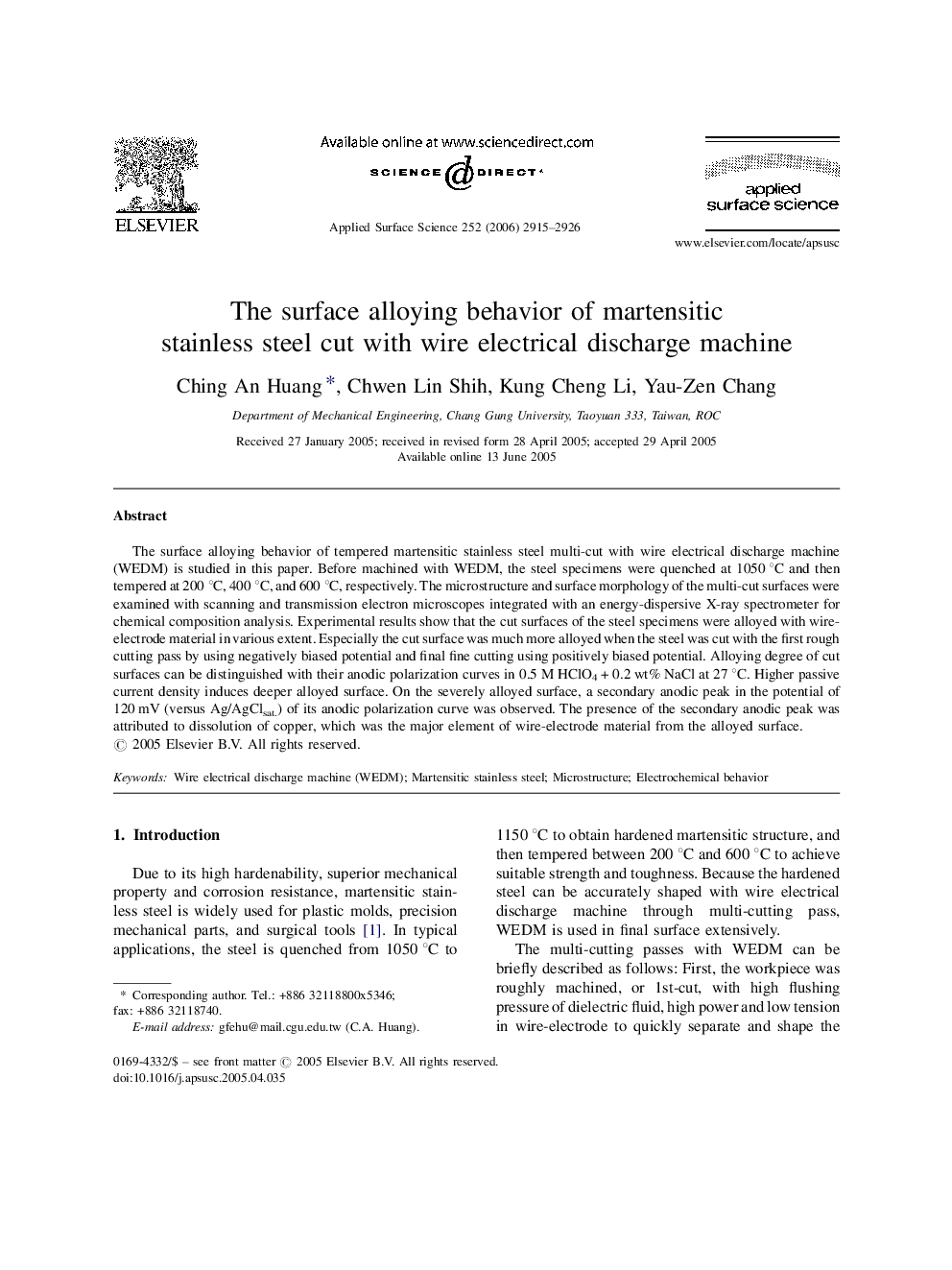| Article ID | Journal | Published Year | Pages | File Type |
|---|---|---|---|---|
| 5367186 | Applied Surface Science | 2006 | 12 Pages |
The surface alloying behavior of tempered martensitic stainless steel multi-cut with wire electrical discharge machine (WEDM) is studied in this paper. Before machined with WEDM, the steel specimens were quenched at 1050 °C and then tempered at 200 °C, 400 °C, and 600 °C, respectively. The microstructure and surface morphology of the multi-cut surfaces were examined with scanning and transmission electron microscopes integrated with an energy-dispersive X-ray spectrometer for chemical composition analysis. Experimental results show that the cut surfaces of the steel specimens were alloyed with wire-electrode material in various extent. Especially the cut surface was much more alloyed when the steel was cut with the first rough cutting pass by using negatively biased potential and final fine cutting using positively biased potential. Alloying degree of cut surfaces can be distinguished with their anodic polarization curves in 0.5 M HClO4 + 0.2 wt% NaCl at 27 °C. Higher passive current density induces deeper alloyed surface. On the severely alloyed surface, a secondary anodic peak in the potential of 120 mV (versus Ag/AgClsat.) of its anodic polarization curve was observed. The presence of the secondary anodic peak was attributed to dissolution of copper, which was the major element of wire-electrode material from the alloyed surface.
